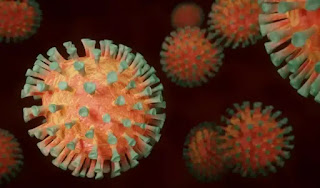The Deep Breath algorithm detects Covid-19 based on the breath even in patients without symptoms.
Ecublens Scientists from the ETH Lausanne (EPFL) have presented two Artificial Intelligence (AI) that can detect Covid-19. According to Mary-Anne Hartley's team, DeepChest uses ultrasound images of the lungs, similar to a recently introduced AI that detects Parkinson's in its early stages using images of the retina. DeepChest is based on lung ultrasound images of thousands of Covid-19 patients who were treated at the University Hospital Lausanne (CHUV).
DeepBreath, on the other hand, detects Covid-19 based on breathing sounds that are monitored with a digital stethoscope. Alain Gervaix, pediatrician and infectiologist, has been analyzing the breathing sounds of his patients since 2017 in order to develop the so-called pneumoscope, an intelligent digital stethoscope. Gervaix got the idea for this because he noticed that by eavesdropping on the lungs he can detect asthma, bronchitis or pneumonia based on sounds.
Researchers at the University of Augsburg are also following a similar approach, who have presented an algorithm that can detect Covid-19 based on changes in language. The accuracy of this diagnostic method has so far been 80 percent.
Changes in lung tissue
According to the scientists, the first results of the DeepBreath algorithm indicate that changes in lung tissue take place even before the actual outbreak of Covid-19. This would particularly help identify people with asymptotic Covid-19 infection who are also infectious. Studies show that up to 80 percent of all SARS-CoV-2 infections have no symptoms.
According to Hartley, the scientists want to create robust and trustworthy instruments that will still be useful after the pandemic.The application of DeepBreath should be ready for use by the end of the year.
Further improvements should make it possible to differentiate between bacterial and viral pneumonia on the basis of the breath. Research is also being carried out into a solution that works with the microphones of conventional cell phones.




No comments:
Post a Comment